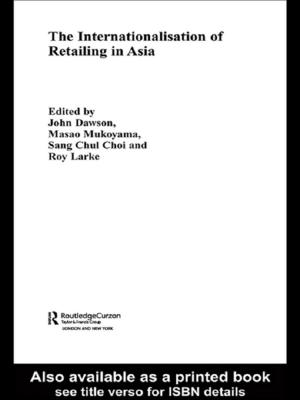Luxury brand management in China
Industry report for Luxury and Fashion retail in China
Business & Finance, Industries & Professions, Distribution, Marketing & Sales, International, Retailing| Author: | Adriaan Brits | ISBN: | 1230000606639 |
| Publisher: | Adriaan Brits | Publication: | August 14, 2015 |
| Imprint: | Language: | English |
| Author: | Adriaan Brits |
| ISBN: | 1230000606639 |
| Publisher: | Adriaan Brits |
| Publication: | August 14, 2015 |
| Imprint: | |
| Language: | English |
Would you like to know the outlook for Luxury consumables in China in 2015 and beyond? This specialist report has it all.
Adriaan Brits is the lecturer for a large international group on Udemy where he teaches the International Marketing Diploma. As a specialist consultant in this field, he created this report to help companies who seek an entry strategy into the Chinese Luxury Market. This report acknowledges that whilst experts do not find Chinese consumer data reliable, by analyzing the recent progress of major US and European luxury brands with a duty to report on investors, a clearer picture of this specific sector emerges. Store counts and performance of brands such as OMEGA, LVMH, PRADA, Hermes and Burberry are taken into consideration. By considering the performance of these brands alongside economic indicators, the report finds that significant opportunities exist in China. However, a broad range of geopolitical factors and conflicting reports on political risk affirm the need to enter the market cautiously, providing specific examples of how China is likely to react to treatment by the West – and the implications this may have for western corporations doing business in China.
By analyzing further trends such as internal growth and migration patterns together with technological factors, the report ascertains that in Coastal China and Tier 1 cities, the market is becoming saturated, yet Mainland China offers in excess of 100 Tier 2 cities which can be exploited either through supply chain innovation linked to technology and e-commerce, through physical store space or a combination of these methods. Market entry strategies of the abovementioned luxury brands indicates that a varying range of pragmatic and strategy rules is being applied by the bigger players. It is learned that many brands have partnered with the Chinese government in order to seize the supply chain as first movers. Some brands have issued licenses and franchises and finally, most brands are now confident in the Chinese market to the extent that these franchises are now being bought back. In discussing the entry strategies, various approaches are provided for corporations with significant capital whereas smaller companies will likely need to give up more control in order to access the full scale of the Chinese market. The report discusses seven areas of the marketing mix where suitable adaptations can be made for the Chinese market.
Finally, it concludes by demonstrating how fluid the environment is. The report is cautiously upbeat about very significant marketing opportunities for Luxury brands in China and provides full justification for being so.
Would you like to know the outlook for Luxury consumables in China in 2015 and beyond? This specialist report has it all.
Adriaan Brits is the lecturer for a large international group on Udemy where he teaches the International Marketing Diploma. As a specialist consultant in this field, he created this report to help companies who seek an entry strategy into the Chinese Luxury Market. This report acknowledges that whilst experts do not find Chinese consumer data reliable, by analyzing the recent progress of major US and European luxury brands with a duty to report on investors, a clearer picture of this specific sector emerges. Store counts and performance of brands such as OMEGA, LVMH, PRADA, Hermes and Burberry are taken into consideration. By considering the performance of these brands alongside economic indicators, the report finds that significant opportunities exist in China. However, a broad range of geopolitical factors and conflicting reports on political risk affirm the need to enter the market cautiously, providing specific examples of how China is likely to react to treatment by the West – and the implications this may have for western corporations doing business in China.
By analyzing further trends such as internal growth and migration patterns together with technological factors, the report ascertains that in Coastal China and Tier 1 cities, the market is becoming saturated, yet Mainland China offers in excess of 100 Tier 2 cities which can be exploited either through supply chain innovation linked to technology and e-commerce, through physical store space or a combination of these methods. Market entry strategies of the abovementioned luxury brands indicates that a varying range of pragmatic and strategy rules is being applied by the bigger players. It is learned that many brands have partnered with the Chinese government in order to seize the supply chain as first movers. Some brands have issued licenses and franchises and finally, most brands are now confident in the Chinese market to the extent that these franchises are now being bought back. In discussing the entry strategies, various approaches are provided for corporations with significant capital whereas smaller companies will likely need to give up more control in order to access the full scale of the Chinese market. The report discusses seven areas of the marketing mix where suitable adaptations can be made for the Chinese market.
Finally, it concludes by demonstrating how fluid the environment is. The report is cautiously upbeat about very significant marketing opportunities for Luxury brands in China and provides full justification for being so.















